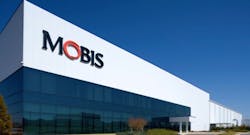Evidence of the potential for the industrial Internet of Things and the connected factory concept that supports it can be seen in the appearance of unfamiliar suppliers in the industrial automation sector. Though these suppliers are rarely new businesses, they are often relative newcomers to the industrial production arena—coming into the scene as industry’s need for their product increases.
One example of such a company is JMA Wireless, which I met with for the first time at the ARC Forum in Orlando last month. JMA was founded in1942 and has extensive deployments outside of the production industries in major facilities such as Levi’s Stadium in Santa Clara, Calif., Daytona National Speedway in Florida, Oracle Arena in Oakland, Calif. Vienna International Airport in Austria, Memphis International Airport in Tennessee, and many others.
JMA Wireless provides end-to-end distributed antenna systems (DAS) to provide reliable wireless signal coverage over large areas. Their product line includes: master units providing point of interface options to a radio source base transceiver station; fiber transceivers with a mix of rack unit power classes; remote units in multiple power classes with single antenna ports that can cover areas up to 20 km; transmission line products featuring compression connectors and weather protection systems; and indoor and outdoor antennas and filters with a range of beam options.
As ARC Advisory Group points out in its “Planning for the Industrial Internet of Things” report, “Communication is a critical element for the functions of Internet of Things-based smart environments.” It is around points such as this that JMA is focusing its approach to industry, by pointing out how its systems are designed to address wireless communications issues in industry—such as providing coverage to large areas; coping with high variance in signal interference; adaptability to indoor and outdoor network usage; and handling both human and machine communications.
While meeting with Todd Landry, corporate vice president at JMA Wireless, at the ARC Forum, I asked him about JMA’s experience to date in the industrial sector. He pointed to recent deployments at the Hyundai Mobis Alabama plant that is a supplier to KIA Motors and the GE Battery Plant in Schenectady, N.Y.
Hyundai’s Mobis Alabama plant, located in Montgomery, Ala., is a supplier to KIA Motors Manufacturing Georgia (KMMG). This facility assembles the four major modules—front chassis, rear chassis, cockpit, and front end—as well as the front and rear bumpers used on all vehicles produced by KMMG.
Landry said this plant went live with a JMA Wireless single operator, multi-band wireless system in 2013. The plant’s wireless system comprises a JMA 700/850/2100 MHz optical DAS network, using four tri-band remote units, active point of interface with BTS/node-B/eNB, and a supervisory module for remote monitoring.
“In many scenarios like this, the organization will contract with a single mobile phone provider for employees to communicate at the facility,” Landry explained. “However, many facilities are fabricated from metal structures, steel-walled buildings, or even concrete—all of which have an attenuating effect on cellular signal, which typically comes from a distant cell tower. And since these cell towers are shared among anyone that roams within the ‘cell’, as more people enter the cell the less available bandwidth there is for each person.”
He added that, in such instances, each mobile user and their voice and data sessions are registered as a ‘base station’, often referred to in the industry as a BTS or a nodeB—this BTS is assigned to manage people within the cell.
“In the case of a facility like the Hyundai plant, our installation assigned a dedicated BTS to the facility and, instead of receiving the radio signals from a distant tower, they are delivered via the JMA Wireless Teko DAS,” Landry said. “This approach puts antennas directly inside the building, strategically placed to provide the optimum signal quality to mobile devices and to avoid interference with one another. As a result, when users walk into the facility their mobile devices roam onto the cell dedicated for the facility, where they have excellent signal and data performance is maximized.”
The GE battery plant in New York went live with JMA Wireless in early 2014 with a single-carrier optical 700/850/1900/2100 MHz DAS, using three low-power quad-band remotes, active POI with BTS/Node-B/eNB, and a supervisory module for remote monitoring. Landry said the use case for the GE plant is essentially the same as the Hyundai Mobis plant—the main difference being that the Hyundai plant encompasses some 2 million square feet of buildings (with key buildings fitted for mobile coverage and capacity), while the GE battery plant is approximately 200,000 square feet.

